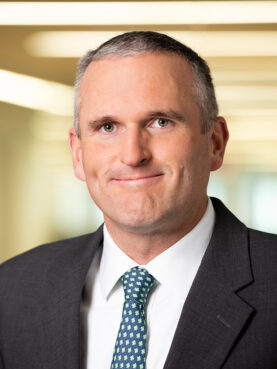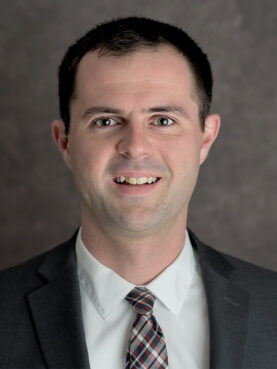(RNS) — Since the mid-2000s, the fastest-growing religious group in America has been the so-called nones.
The percentage of Americans who claim no religious affiliation nearly doubled from 2007 (16%) to 2022 (31%), becoming a force in American culture and one of the largest segments of the religious landscape, according to Pew Research.
But all things pass. And the skyrocketing growth of the nones may be fading.
“They are not growing as fast as they used to,” said Ryan Burge, associate professor of political science at Southern Illinois University and author of “The Nones: Where They Came From, Who They Are, and Where They Are Going.”
Burge, known for his popular graphs depicting religion trends, told Religion News Service in an interview that the growth of the nones appears to be waning. He pointed to data from Pew, the General Social Survey and the Cooperative Election Study, all of which appear to show a slowdown in the percentage of Americans who claim no religion.
Pew’s most recent published data found that 28% of Americans did not identify with a religion in 2023, a slight dip from the previous year. The CES data, the latest of which was released in May, showed that from 2020 to 2023, the percentage of nones was relatively stable. In 2020, the CES found that 34% of those surveyed were nones, while in 2021 and 2023, that percentage was 36%. (In 2022, 35% of those surveyed were nones.)
“The Rise of the Nones, 2008-2023” (Graphic courtesy Ryan Burge)
“From a pure statistical standpoint, I don’t know if we can say with any certainty whether there’s a larger share of nones in the United States today than there was in 2019,” Burge wrote in a recent edition of his Substack newsletter.
Burge compared the growth of the nones to the growth curve of popular products such as the Peloton bikes or tech companies like Apple and Google. Those brands grew rapidly at first but could not keep up that rapid growth forever.
“They became mature businesses,” said Burge. “That’s what the nones are — they’re not going to grow at this unbelievable pace going forward.”
Burge also suspects that most of the Americans who were eager or ready to give up on identifying with a religion have already done so. Any future growth, he said, will likely come from generational replacement — as older, more religious Americans die off and younger, less religious Americans take their place.
Greg Smith, associate director of research at Pew Research Center, said it’s too early to tell what exactly is happening with the nones. There have been some signs in recent years that the percentage of nones is stabilizing, he said, but that may be due to the normal fluctuations in survey responses from year to year.
Greg Smith. (Photo © David Hills)
In 2022, he said, the percentage of nones jumped to 31%, then dropped back down to 28%. He added that in 2016, the growth of the nones appeared to pause and then started to grow again.
“As we looked at the data, the conclusion we’ve come to, even it is kind of wishy-washy, is that it’s way too early to tell if the rise of the religious nones has come to an end,” he said.
Conrad Hackett, a senior demographer and associate director of research at Pew, said there are signs that “something interesting” is happening with nones right now but more data is needed.
Hackett said the conditions that fueled the rise of the nones are still in place. Younger Americans are less religious than older Americans, many Americans still switch their religious faith, and being nonreligious has become “stickier,” said Hackett — so that people who are born without a religious identity are more likely to stay nonreligious. Nonreligious people in the U.S. also tend to be younger than religious people.
Hackett is the co-author of a 2022 Pew report that projected what religion in American could look like in the next 50 years. That report looked at the birth and mortality rates as well as rates of switching religious identities and projected a long, slow growth in the nones for the foreseeable future. Researchers projected that by 2070, the nones would make up between 41% and 52% of Americans.
Christians, according to Pew’s projections, would make up just under half of Americans, with non-Christian religious people making up about 12% of the population.
Complicating matters is that Pew, like other organizations that survey religion in America, has moved to a probability-based online model for surveys — rather than mostly phone interviews. The GSS, a well-respected and long-running survey, switched from in-person interviews to a hybrid phone and online model during COVID — making it harder to compare its most recent data with past versions.
Ryan Burge. (Courtesy photo)
The CES data has consistently found higher percentages of nones than the GSS and Pew. But Burge said all three sources appear to show that something has changed with the growth of the nones.
The slowing growth of the nones doesn’t mean a religious revival in the U.S. Instead, Burge said, the U.S. will likely end up in the future with large numbers of religious people and nonreligious people, with neither group having a sizable majority. That will pose challenges for democracy, he said, which relies on cooperation and compromise — which is difficult when many people are feeling unnerved by the changes in the country and where religious and nonreligious people have different ideas on how the country should be run.
And those conflicting ideas lead to polarization and at times, hostility. That hostility, if it continues to grow, “will be bad for democracy,” said Burge.
“We can’t function in a democracy where you have two very large groups who hate each other.”








